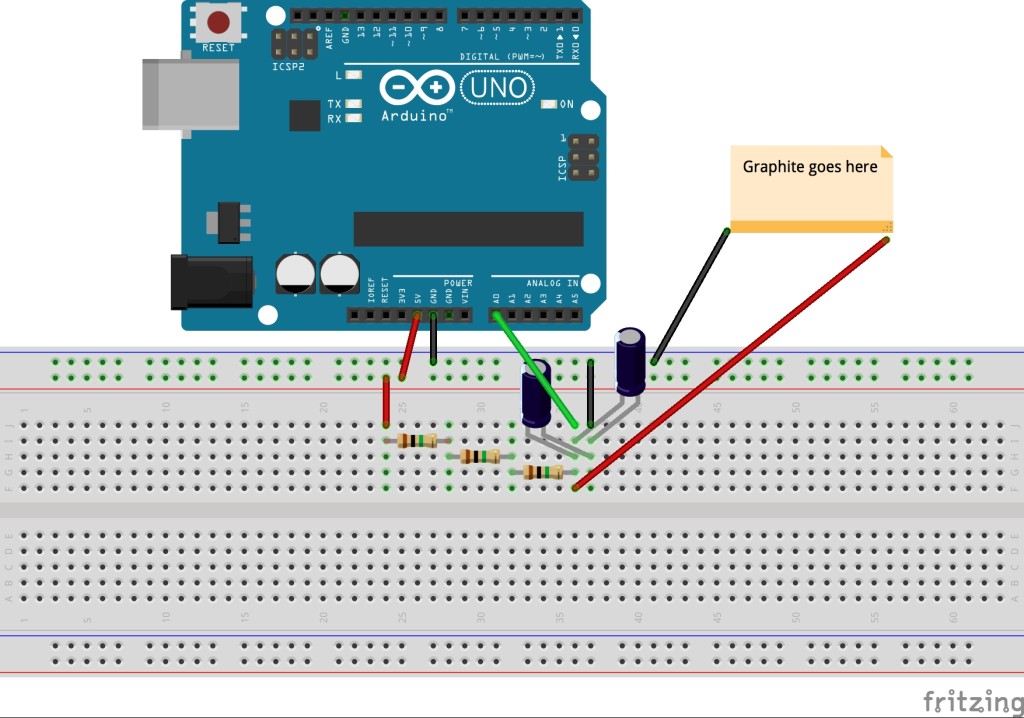One-in-one-out: “Resonant Canvas”
|
Group members: Dan Sakamoto, Susan Zuo How it works: This project sets up a situation where two participants explore a pre-recorded dialogue through the act of drawing. In this project, each participant is given a special graphite crayon. When they draw on the paper, the conversation between a man and women will be played from two speakers. The women’s voice will be played from one speaker and corresponds to the drawing of one participant. The man’s voice will be played from the other speaker and corresponds to the other participant’s drawing. Through drawing on the same piece of paper, the participants permute the existing sentences and recreate the pre-recorded dialogue of marriage, life and eternity. They also completes this conversation through their creation of art which embeds their own understanding of the topic. Concept: In this project, we are interested to see how two participants can inject their creative input into an already engaging and open-ended conversation and eventually complete a dialogue between themselves. We chose a clip from “The Certified Copy” as the audio track because the movie explores the legitimate value of copies as recreation of original work, which echoes the participant’s creation of a new conversation from a copy of an existing dialogue. Through this project, we hope to explore the richness and openness of a conversation. YouTube / Dan Sakamoto – via Iframely Implementation: This piece senses the graphite laid by the pencils and plays the soundtrack corresponded to each participant based on the amount of graphite. The sensing of the graphite is completed by two RC circuit connected to two arduino. The arduino then smooths out the analog input with a smoothing algorithm and transfers the data stream to the computer through the serial port. After receiving the data, the computer uses Max to map the audio with the varying input. The audios and programs used in this project can be found in this Github repository. The schematic of the RC circuit is shown below.
|

